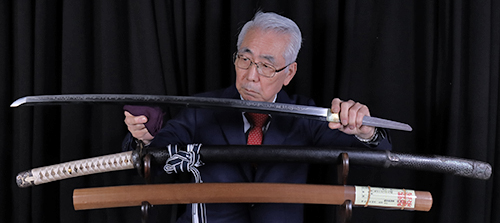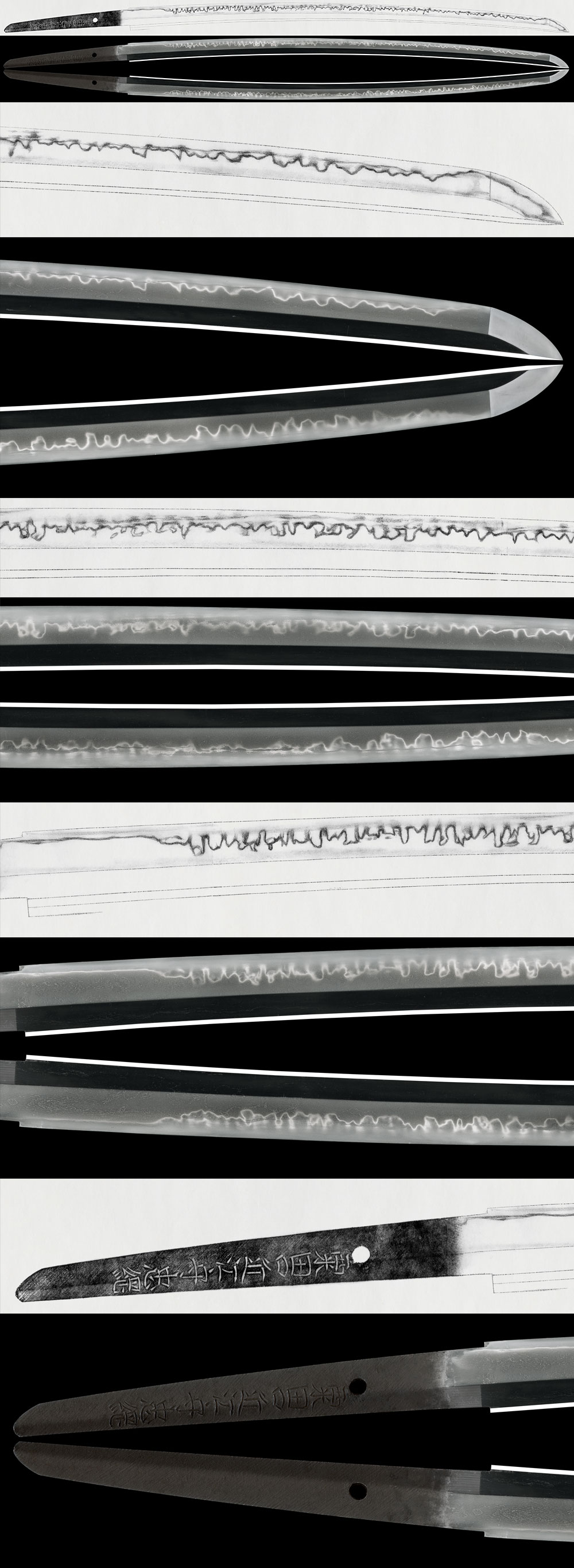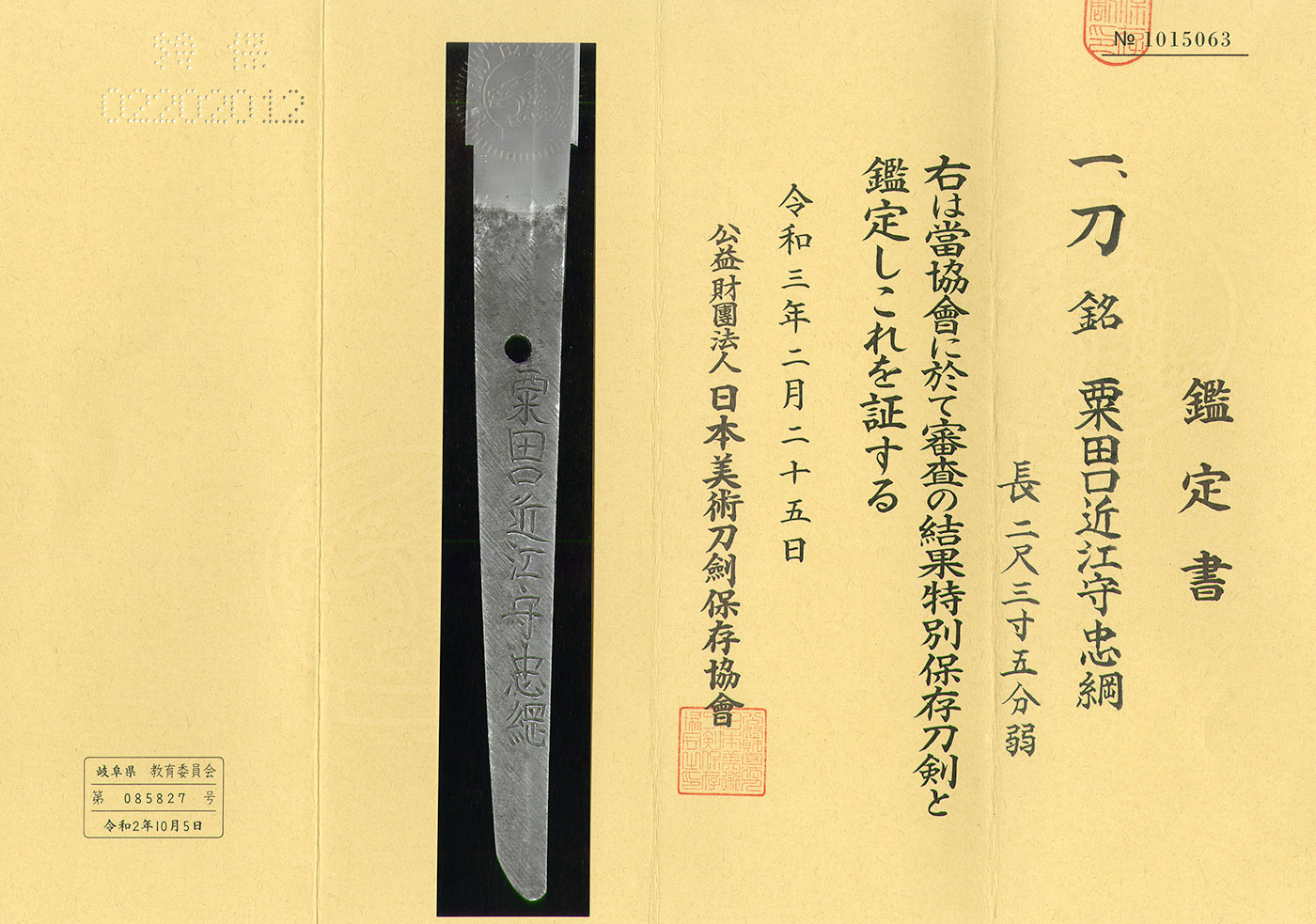Ordering number: 21767
Katana in Shirasaya with Koshirae.(NBTHK Tokubetsu Hozon Token)
Signature: Awataguchi Oumi Kami Tadatsuna(2nd generation)
粟田口近江守忠綱(2代)
Shinto: Jyo Jyo Saku: Ryo Wazamono: Settsu
(We divide 4 sections for each sword as Saijyo saku, Jyo-jyo saku, Jyo saku, and regular saku)
This sword belongs to Jyo Jyo Saku ranking.
The blade was polished by Sashikomi style.
Habaki: Gold foiled single habaki.
Blade length: 71.1cm or 27.99inches.
Sori:1.6cm or 0.62inches.
Mekugi:1
Width at the hamachi:2.99cm or 1.17inches.
Width at the Kissaki:1.6 cm or 0.62inches.
Kasane:0.68cm or 0.26inches.
The weight of the sword:690grams
Era: The Genroku era, the Edo period
Shape: The blade is normally broad and thick with deep Sori and longer Kissaki. Well-shaped.
Jigane: Koitamehada is grained well with Jinie. Elaborate Settsu Jigane.
Hamon: Niedeki Suguha from Hamachi, after that Gunomemidare mixed with Chojimidare. Ashi is long. Sunagashi and Kinsuji work really actively in Hachu. Boshi turns back at the tip.
Special Feature: 2nd has succeeded the name “Tadatsuna” from 1st generation, but his works are different from the ones by the 1st. The 2nd made gorgeous and stronger Hamon like this work.: Chojiba, Doranba, or Ashinagachoji with Sunagashi.
Koshirae: Handashi Koshirae
Saya: Black Ishimeji Saya. Aogaichirashi and black dots are attached to the top and bottom of the Saya.
Tsuba: Mokko-shaped iron Tsuba. Althea family crests and stars are engraved with gold color.
Fuchikashira/Kojiri/other fittings: On iron plate, patterns are engraved with silver color.
Menuki: On Shakudo plate, harness is engraved with gold color.
From Aoi Art: After the mid 17th century, the productions of the crops increased dramatically in Japan, and Chonin(city-people) had gained more power and industries and economic had developed more than ever, and resulted in the significantly great progress on the area of literature, studies, and arts. By the economical power, Chonin had made great arts mainly in Osaka and Kyo(Kyoto). On this background, the demands for the swords had declined significantly, so the sword smiths started to make gorgeous and well-made works with Doranba, Chojimidare, or blade-engravings. Because Chonin had permission to have swords, so the sword smiths made many gorgeous Wakizashi for them. That’s why we can find great wakizashi among the works from this era. This work has Chojimidare which reminds of Ichimonji, and Kinsuji works beautifully in Hachu. Koshirae is also nicely-made and has no flaws. They fit themselves together really well. It is polished by Sashikomi-Kenma method, so we can see the functions of Hachu really well. We truly recommend this one for you.
NBTHK Tokubetsu Hozon Token
Aoi Art estimation paper: whole Oshigata.
Price:1,800,000 JPY-.
商談中 HOLD





